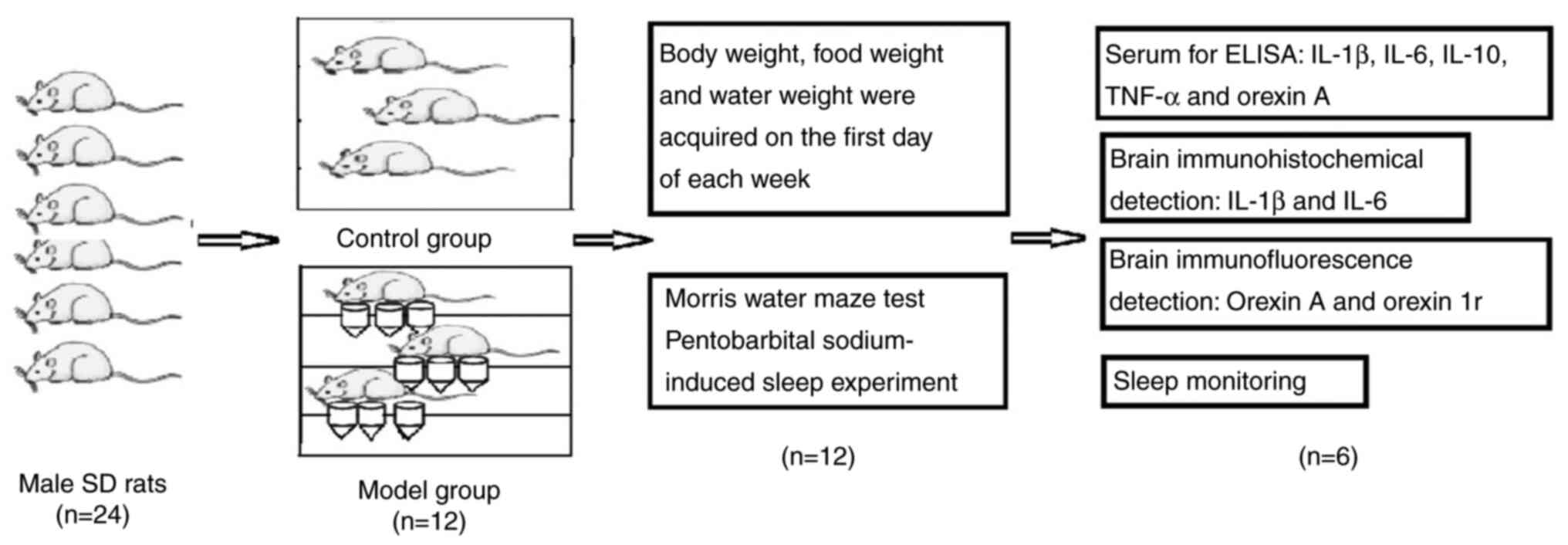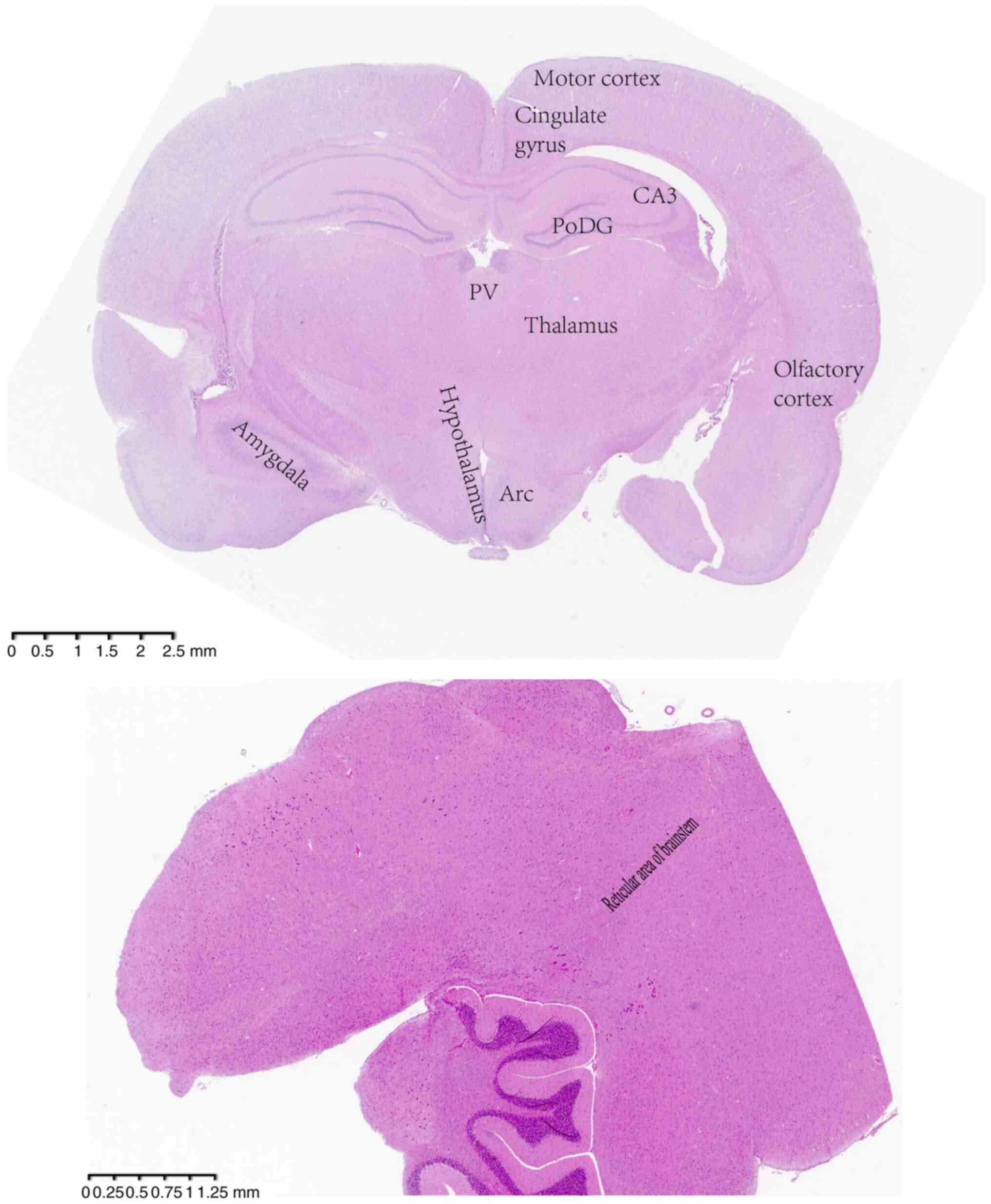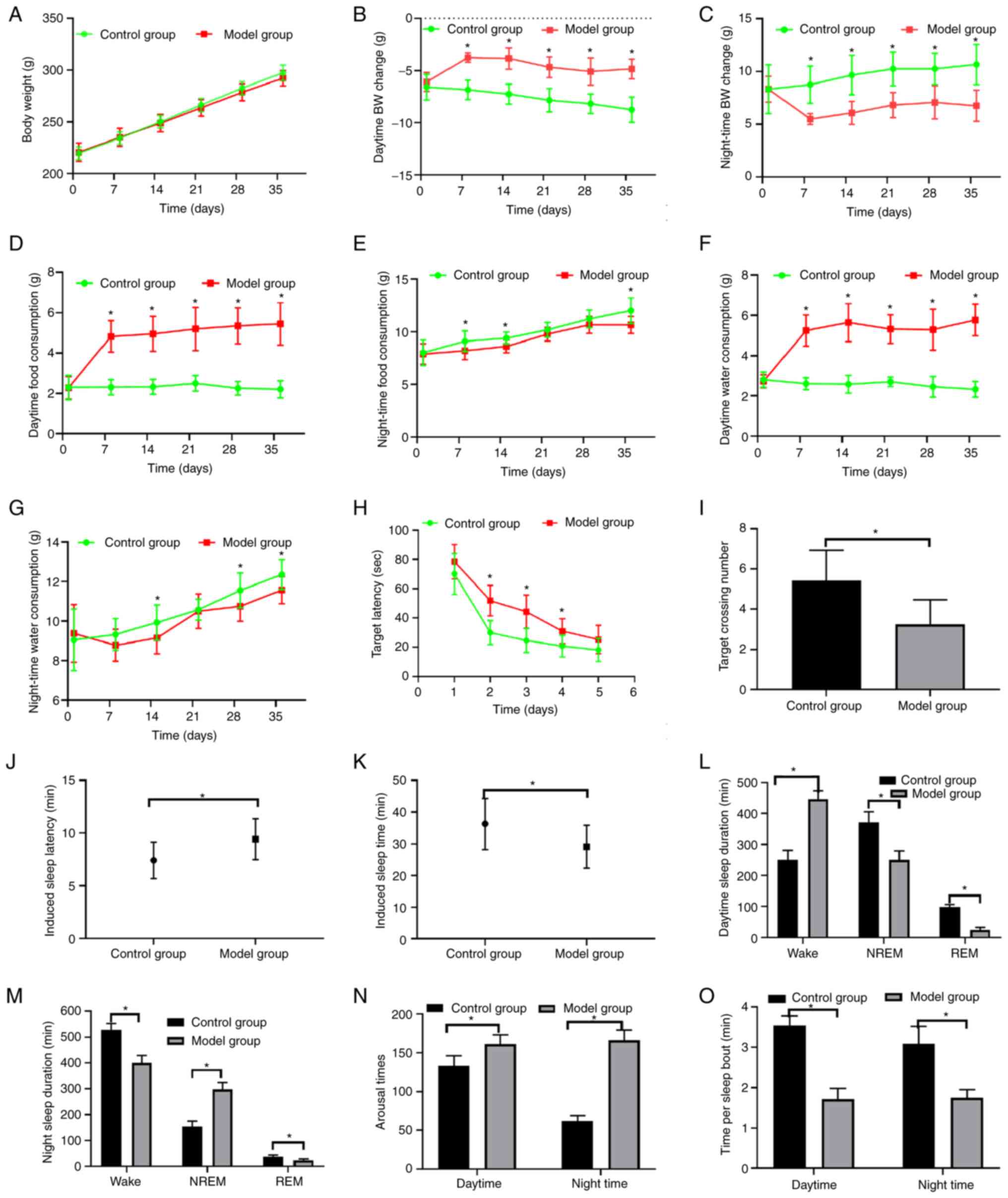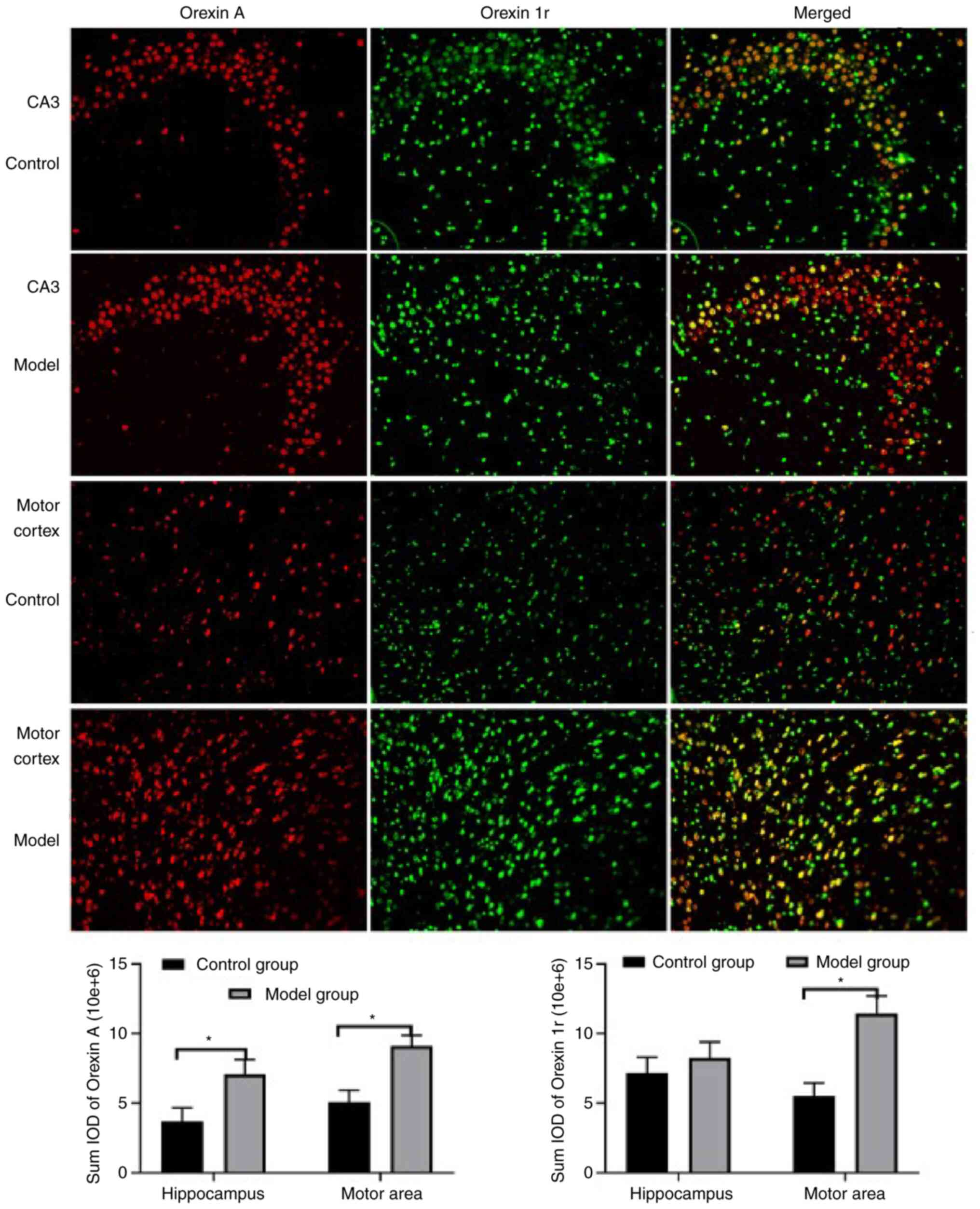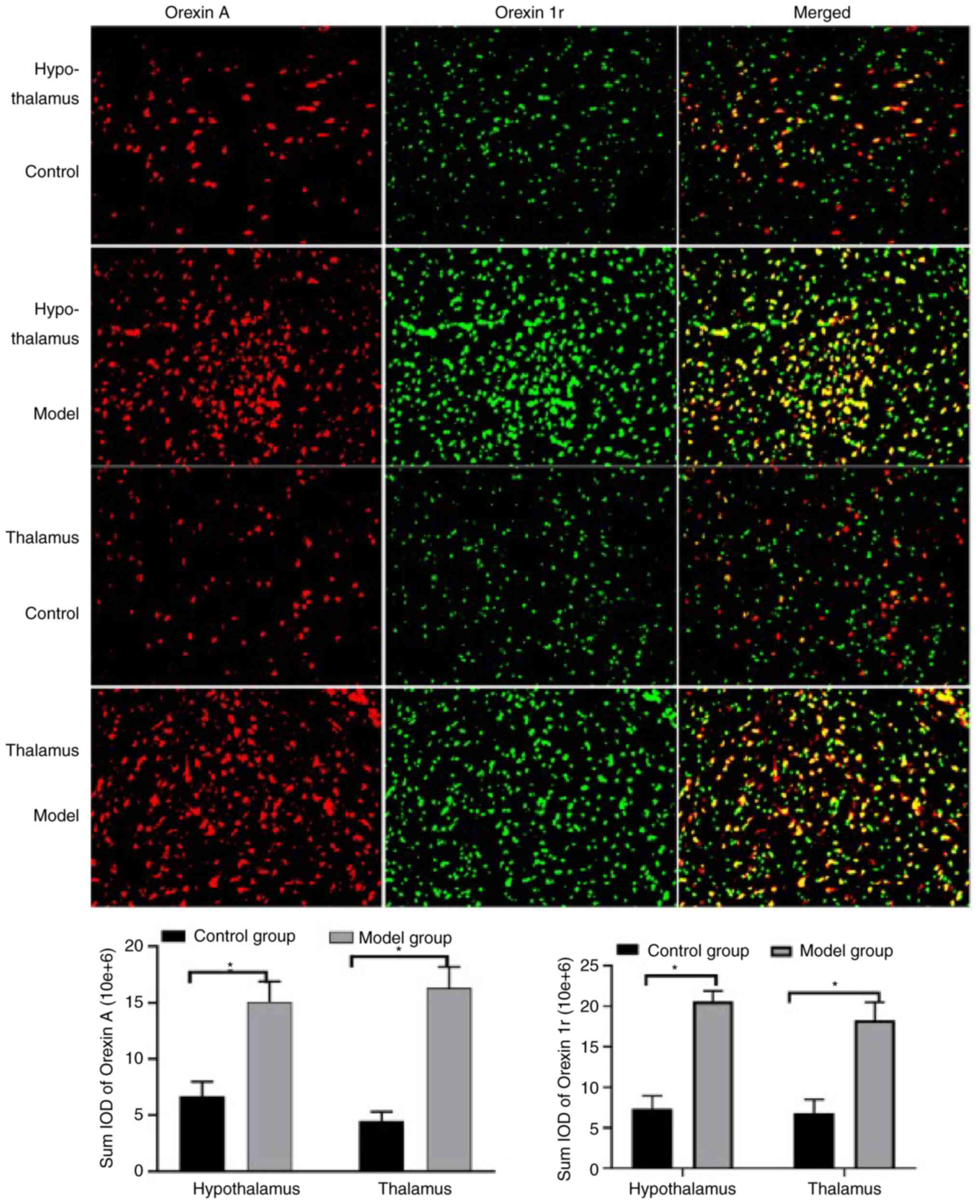|
1
|
Qaseemg A, Kansagara D, Forciea MA, Cooke
M and Denberg TD: Clinical Guidelines Committee of the American
College of Physicians. Management of chronic insomnia disorder in
adults: A clinical practice guideline from the American college of
physicians. Ann Intern Med. 165:125–133. 2016.PubMed/NCBI View
Article : Google Scholar
|
|
2
|
American Psychiatric Association:
Diagnostic and statistical manual of mental disorders, 5th edition.
Bejing University Publishing House, Beijing, pp151, 2019.
|
|
3
|
American Academy of Sleep Medicine:
International classification of sleep disorders (3rd edition).
American Academy of Sleep Medicine, Darien, IL, pp1387, 2014.
|
|
4
|
Zhang P, Li YP, Wu HJ and Zhao ZX: Chinese
guidelines for the diagnosis and treatment of insomnia in adults
(2017 edition). Chin J Neurol. 51:324–335. 2018.
|
|
5
|
China Sleep Research Association. Chinese
guidelines for the diagnosis and treatment of insomnia. Chin J Med.
97:1844–1856. 2017.(In Chinese).
|
|
6
|
Appleton SL, Reynolds AC, Gill TK, Melaku
YA and Adams RJ: Insomnia prevalence varies with symptom criteria
used with implications for epidemiological studies: Role of
anthropometrics, sleep habit, and comorbidities. Nat Sci Sleep.
14:775–790. 2022.PubMed/NCBI View Article : Google Scholar
|
|
7
|
Javad-Moosavi BZ, Nasehi M, Vaseghi S,
Jamaldini SH and Zarrindast MR: Activation and inactivation of
nicotinic receptnors in the dorsal hippocampal region restored
negative effects of total (TSD) and REM sleep deprivation (RSD) on
memory acquisition, locomotor activity and pain perception.
Neuroscience. 433:200–211. 2020.PubMed/NCBI View Article : Google Scholar
|
|
8
|
Dai D, Zheng B, Yu Z, Lin S, Tang Y, Chen
M, Ke P, Zheng C, Chen Y and Wu X: Right stellate ganglion block
improves learning and memory dysfunction and hippocampal injury in
rats with sleep deprivation. BMC Anesthesiol.
21(272)2021.PubMed/NCBI View Article : Google Scholar
|
|
9
|
Cao Y, Li Q, Yang Y, Ke Z, Chen S, Li M,
Fan W, Wu H, Yuan J, Wang Z and Wu X: Cardioprotective effect of
stem-leaf saponins from panax notoginseng on mice with sleep
derivation by inhibiting abnormal autophagy through PI3K/Akt/mTOR
pathway. Front Cardiovasc Med. 8(694219)2021.PubMed/NCBI View Article : Google Scholar
|
|
10
|
Bao LD, Si Lg, Wang Yh, Wu YG and Bo A:
Effect of two GABA-ergic drugs on the cognitive functions of rapid
eye movement in sleep-deprived and recovered rats. Exp Ther Med.
12:1075–1084. 2016.PubMed/NCBI View Article : Google Scholar
|
|
11
|
López-Armas G, Flores-Soto ME,
Chaparro-Huerta V, Jave-Suarez LF, Soto-Rodríguez S, Rusanova I,
Acuña-Castroviejo D, González-Perez O and González-Castañeda RE:
Prophylactic role of oral melatonin administration on neurogenesis
in adult Balb/C mice during REM sleep deprivation. Oxid Med Cell
Longev. 2016(2136902)2016.PubMed/NCBI View Article : Google Scholar
|
|
12
|
Suchecki D and Tufik S: Social stability
attenuates the stress in the modified multiple platform method for
paradoxical sleep deprivation in the rat. Physiol Behav.
68:309–316. 2000.PubMed/NCBI View Article : Google Scholar
|
|
13
|
Zager A, Andersen ML, Ruiz FS, Antunes IB
and Tufik S: Effects of acute and chronic sleep loss on immune
modulation of rats. Am J Physiol Regul Integr Comp Physiol.
293:R504–R509. 2007.PubMed/NCBI View Article : Google Scholar
|
|
14
|
Fahmawi A, Khalifeh MS, Alzoubi KH and
Rababa'h AM: The effects of acute and chronic sleep deprivation on
the immune profile in the rat. Curr Mol Pharmacol. 16:101–108.
2023.PubMed/NCBI View Article : Google Scholar
|
|
15
|
Chen DR, Truong KD and Tsai MJ: Prevalence
of poor sleep quality and its relationship with body mass index
among teenagers: Evidence from Taiwan. J Sch Health. 83:582–588.
2013.PubMed/NCBI View Article : Google Scholar
|
|
16
|
Klink ME, Dodge R and Quan SF: The
relation of sleep complaints to respiratory symptoms in a general
population. Chest. 105:151–154. 1994.PubMed/NCBI View Article : Google Scholar
|
|
17
|
Rodrigues NC, da Cruz NS, de Paula
Nascimento C, da Conceição RR, da Silva AC, Olivares EL and Marassi
MP: Sleep deprivation alters thyroid hormone economy in rats. Exp
Physiol. 100:193–202. 2015.PubMed/NCBI View Article : Google Scholar
|
|
18
|
Hargis K, Buechel HM, Popovic J and
Blalock EM: Acute psychosocial stress in mid-aged male rats causes
hyperthermia, cognitive decline, and increased deep sleep power,
but does not alter deep sleep duration. Neurobiol Aging. 70:78–85.
2018.PubMed/NCBI View Article : Google Scholar
|
|
19
|
Miladinović Đ, Muheim C, Bauer S, Spinnler
A, Noain D, Bandarabadi M, Gallusser B, Krummenacher G, Baumann C,
Adamantidis A, et al: SPINDLE: End-to-end learning from EEG/EMG to
extrapolate animal sleep scoring across experimental settings, labs
and species. PLoS Comput Biol. 15(e1006968)2019.PubMed/NCBI View Article : Google Scholar
|
|
20
|
Wang C, Guerriero LE, Huffman DM, Ajwad
AA, Brooks TC, Sunderam S, Seifert AW and O'Hara BF: A comparative
study of sleep and diurnal patterns in house mouse (Mus musculus)
and Spiny mouse (Acomys cahirinus). Sci Rep.
10(10944)2020.PubMed/NCBI View Article : Google Scholar
|
|
21
|
Mountney A, Blaze J, Wang Z, Umali M,
Flerlage WJ, Dougherty J, Ge Y, Shear D and Haghighi F: Penetrating
ballistic brain injury produces acute alterations in sleep and
circadian-related genes in the rodent cortex: A preliminary study.
Front Neurol. 12(745330)2021.PubMed/NCBI View Article : Google Scholar
|
|
22
|
Hu Y, Wang YN, Zhang GQ, Dong XZ, Liu WW
and Liu P: Gan-Dan-Liang-Yi-Tang alleviates
p-chlorophenylalanine-induced insomnia through modification of the
serotonergic and immune system. Exp Ther Med. 12:3087–3092.
2016.PubMed/NCBI View Article : Google Scholar
|
|
23
|
Dong YJ, Jiang NH, Zhan LH, Teng X, Fang
X, Lin MQ, Xie ZY, Luo R, Li LZ, Li B, et al: Soporific effect of
modified Suanzaoren Decoction on mice models of insomnia by
regulating Orexin-A and HPA axis homeostasis. Biomed Pharmacother.
143(112141)2021.PubMed/NCBI View Article : Google Scholar
|
|
24
|
Kim S, Jo K, Hong KB, Han SH and Suh HJ:
GABA and l-theanine mixture decreases sleep latency and improves
NREM sleep. Pharm Biol. 57:65–73. 2019.PubMed/NCBI View Article : Google Scholar
|
|
25
|
Bo A, Si L, Wang Y, Bao L and Yuan H:
Mechanism of Mongolian medical warm acupuncture in treating
insomnia by regulating miR-101a in rats with insomnia. Exp Ther
Med. 14:289–297. 2017.PubMed/NCBI View Article : Google Scholar
|
|
26
|
Alhowail A, Alsikhan R, Alsaud M,
Aldubayan M and Rabbani SI: Protective effects of pioglitazone on
cognitive impairment and the underlying mechanisms: A review of
literature. Drug Des Devel Ther. 16:2919–2931. 2022.PubMed/NCBI View Article : Google Scholar
|
|
27
|
Ullah A, Al Kury LT, Althobaiti YS, Ali T
and Shah FA: Benzimidazole derivatives as new potential NLRP3
inflammasome inhibitors that provide neuroprotection in a rodent
model of neurodegeneration and memory impairment. J Inflamm Res.
15:3873–3890. 2022.PubMed/NCBI View Article : Google Scholar
|
|
28
|
Willie JT, Takahira H, Shibahara M, Hara
J, Nomiyama M, Yanagisawa M and Sakurai T: Ectopic overexpression
of orexin alters sleep/wakefulness states and muscle tone
regulation during REM sleep in mice. J Mol Neurosci. 43:155–161.
2011.PubMed/NCBI View Article : Google Scholar
|
|
29
|
Hatori M, Vollmers C, Zarrinpar A,
DiTacchio L, Bushong EA, Gill S, Leblanc M, Chaix A, Joens M,
Fitzpatrick JA, et al: Time-restricted feeding without reducing
caloric intake prevents metabolic diseases in mice fed a high-fat
diet. Cell Metab. 15:848–860. 2012.PubMed/NCBI View Article : Google Scholar
|
|
30
|
Xiao X, Yeghiazaryan G, Hess S, Klemm P,
Sieben A, Kleinridders A, Morgan DA, Wunderlich FT, Rahmouni K,
Kong D, et al: Orexin receptors 1 and 2 in serotonergic neurons
differentially regulate peripheral glucose metabolism in obesity.
Nat Commun. 12(5249)2021.PubMed/NCBI View Article : Google Scholar
|
|
31
|
Michael NJ and Elmquist JK: Coordination
of metabolism, arousal, and reward by orexin/hypocretin neurons. J
Clin Invest. 130:4540–4542. 2020.PubMed/NCBI View Article : Google Scholar
|
|
32
|
Saper CB, Scammell TE and Lu J:
Hypothalamic regulation of sleep and circadian rhythms. Nature.
437:1257–1263. 2005.PubMed/NCBI View Article : Google Scholar
|
|
33
|
Tripathi S and Jha SK: REM sleep
deprivation alters learning-induced cell proliferation and
generation of newborn young neurons in the dentate gyrus of the
dorsal hippocampus. ACS Chem Neurosci. 13:194–206. 2022.PubMed/NCBI View Article : Google Scholar
|
|
34
|
Ren XJ, Wang QQ, Zhang XP, Wang GY, Liu T,
Deng N and Yan DQ: Establishment of a rat model with ageing
insomnia induced by D-galactosef and para-chlorophenylalanine. Exp
Ther Med. 20:3228–3236. 2020.PubMed/NCBI View Article : Google Scholar
|
|
35
|
McKenna JT, Gamble MC, Anderson-Chernishof
MB, Shah SR, McCoy JG and Strecker RE: A rodent cage change
insomnia model disrupts memory consolidation. J Sleep Res.
28(e12792)2019.PubMed/NCBI View Article : Google Scholar
|
|
36
|
Furukawa T, Nikaido Y, Shimoyama S,
Masuyama N, Notoya A and Ueno S: Impaired cognitive function and
hippocampal changes following chronic diazepam treatment in
middle-aged mice. Front Aging Neurosci. 13(777404)2021.PubMed/NCBI View Article : Google Scholar
|
|
37
|
Gamble MC, Katsuki F, McCoy JG, Strecker
RE and McKenna JT: The dual orexinergic receptor antagonist DORA-22
improves the sleep disruption and memory impairment produced by a
rodent insomnia model. Sleep. 43(zsz241)2020.PubMed/NCBI View Article : Google Scholar
|
|
38
|
Chen Y, Kartsonaki C, Clarke R, Guo Y, Yu
C, Bian Z, Jiang Q, Li S, Chen J, Li L, et al: Characteristics and
correlates of sleep duration, daytime napping, snoring and insomnia
symptoms among 0.5 million Chinese men and women. Sleep Med.
44:67–75. 2018.PubMed/NCBI View Article : Google Scholar
|
|
39
|
Van Erum J, Van Dam D, Sheorajpanday R and
De Deyn PP: Sleep architecture changes in the APP23 mouse model
manifest at onset of cognitive deficits. Behav Brain Res.
373(112089)2019.PubMed/NCBI View Article : Google Scholar
|
|
40
|
Su H, Zhang C, Zou X, Lu F, Zeng Y, Guan
H, Ren Y, Yuan F, Xu L, Zhang M and Dong H: Jiao-tai-wan inhibits
inflammation of the gut-brain-axis and attenuates cognitive
impairment in insomnic rats. J Ethnopharmacol.
250(112478)2020.PubMed/NCBI View Article : Google Scholar
|
|
41
|
Al-Sharif FM and El-Kader SMA:
Inflammatory cytokines and sleep parameters response to life style
intervention in subjects with obese chronic insomnia syndrome. Afr
Health Sci. 21:1223–1229. 2021.PubMed/NCBI View Article : Google Scholar
|
|
42
|
Bian Z, Zhang W, Tang J, Fei Q, Hu M, Chen
X, Su L, Fei C, Ji D, Mao C, et al: Mechanisms underlying the
action of Ziziphi spinosae semen in the treatment of insomnia: A
study involving network pharmacology and experimental validation.
Front Pharmacol. 12(752211)2021.PubMed/NCBI View Article : Google Scholar
|
|
43
|
Al-Jiffri OH and Abd El-Kader SM: Aerobic
versus resistance exercises on systemic inflammation and sleep
parameters in obese subjects with chronic insomnia syndrome. Afr
Health Sci. 21:1214–1222. 2021.PubMed/NCBI View Article : Google Scholar
|
|
44
|
Xia L, Zhang P, Niu JW, Ge W, Chen JT,
Yang S, Su AX, Feng YZ, Wang F, Chen G and Chen GH: Relationships
between a range of inflammatory biomarkers and subjective sleep
quality in chronic insomnia patients: A clinical study. Nat Sci
Sleep. 13:1419–1428. 2021.PubMed/NCBI View Article : Google Scholar
|
|
45
|
Ren CY, Rao JX, Zhang XX, Zhang M, Xia L
and Chen GH: Changed signals of blood adenosine and cytokines are
associated with parameters of sleep and/or cognition in the
patients with chronic insomnia disorder. Sleep Med. 81:42–51.
2021.PubMed/NCBI View Article : Google Scholar
|
|
46
|
Feng H, Wen SY, Qiao QC, Pang YJ, Wang SY,
Li HY, Cai J, Zhang KX, Chen J, Hu ZA, et al: Orexin signaling
modulates synchronized excitation in the sublaterodorsal tegmental
nucleus to stabilize REM sleep. Nat Commun. 11(3661)2020.PubMed/NCBI View Article : Google Scholar
|
|
47
|
Mignot E, Zeitzer J, Pizza F and Plazzi G:
Sleep problems in narcolepsy and the role of hypocretin/orexin
deficiency. Front Neurol Neurosci. 45:103–116. 2021.PubMed/NCBI View Article : Google Scholar
|
|
48
|
Parks GS, Warrier DR, Dittrich L, Schwartz
MD, Palmerston JB, Neylan TC, Morairty SR and Kilduff TS: The dual
hypocretin receptor antagonist almorexant is permissive for
activation of wake-promoting systems. Neuropsychopharmacology.
41:1144–1155. 2016.PubMed/NCBI View Article : Google Scholar
|
|
49
|
Barson JR and Leibowitz SF:
Orexin/hypocretin system: Role in food and drug overconsumption.
Int Rev Neurobiol. 136:199–237. 2017.PubMed/NCBI View Article : Google Scholar
|















